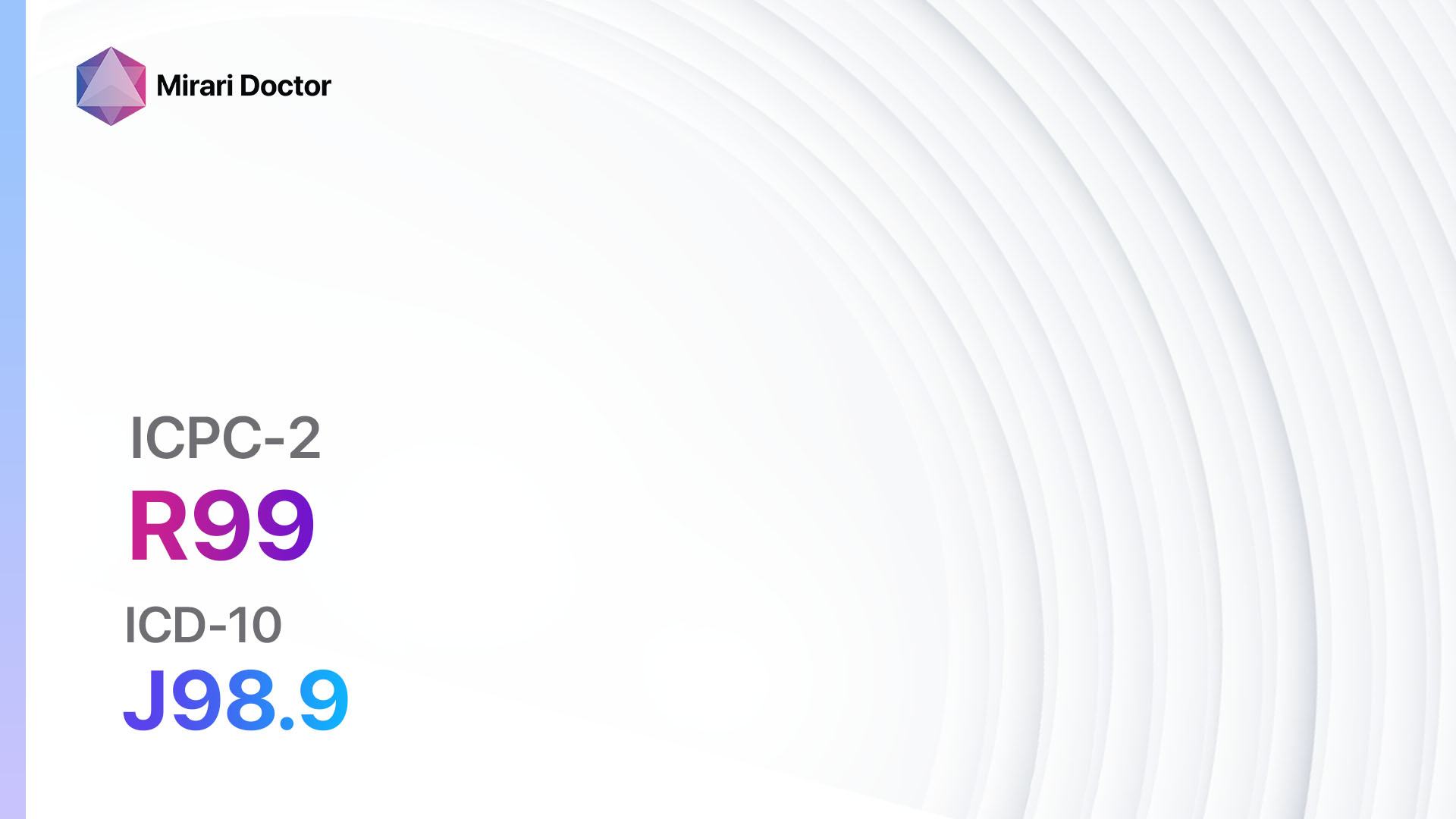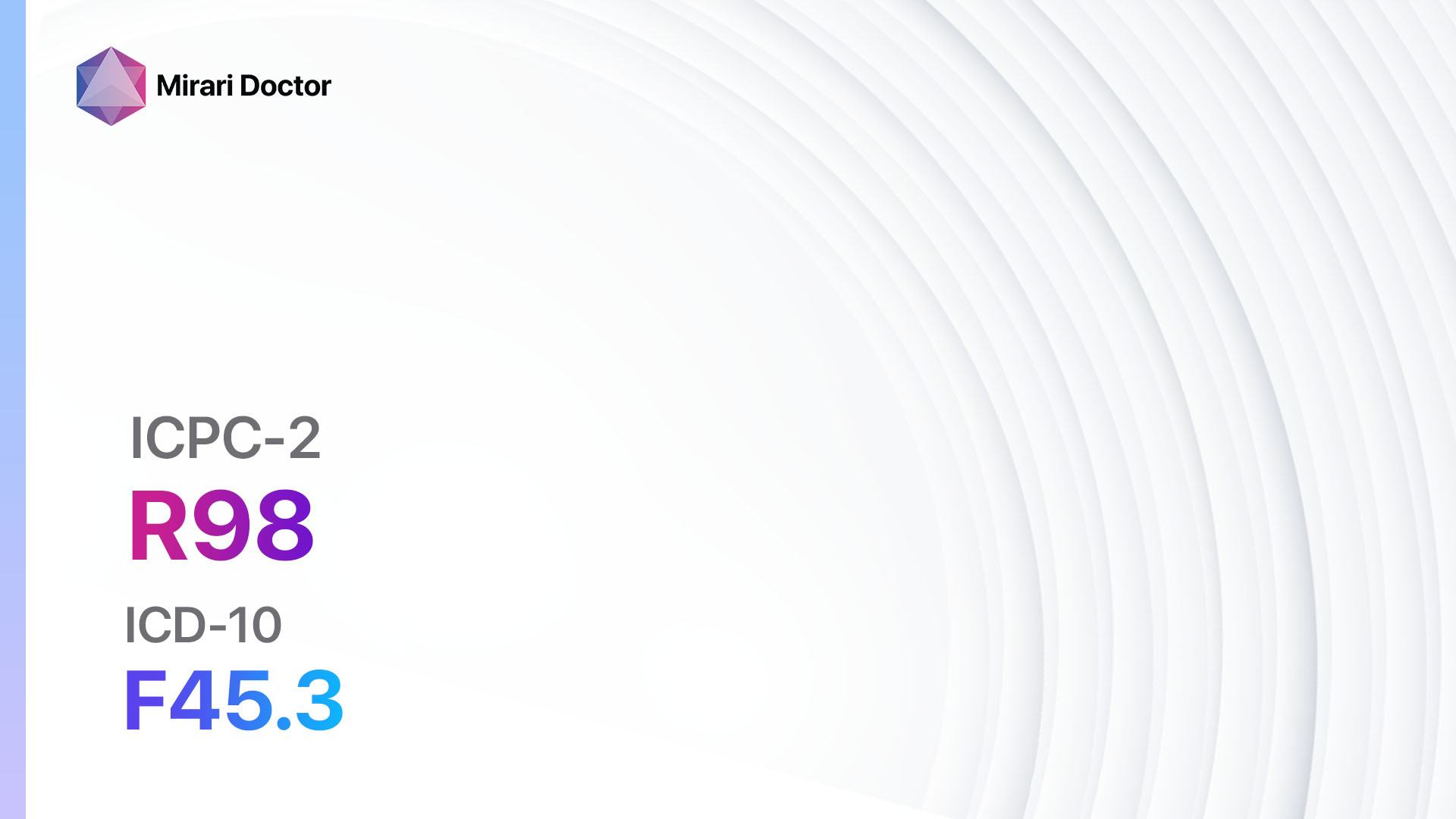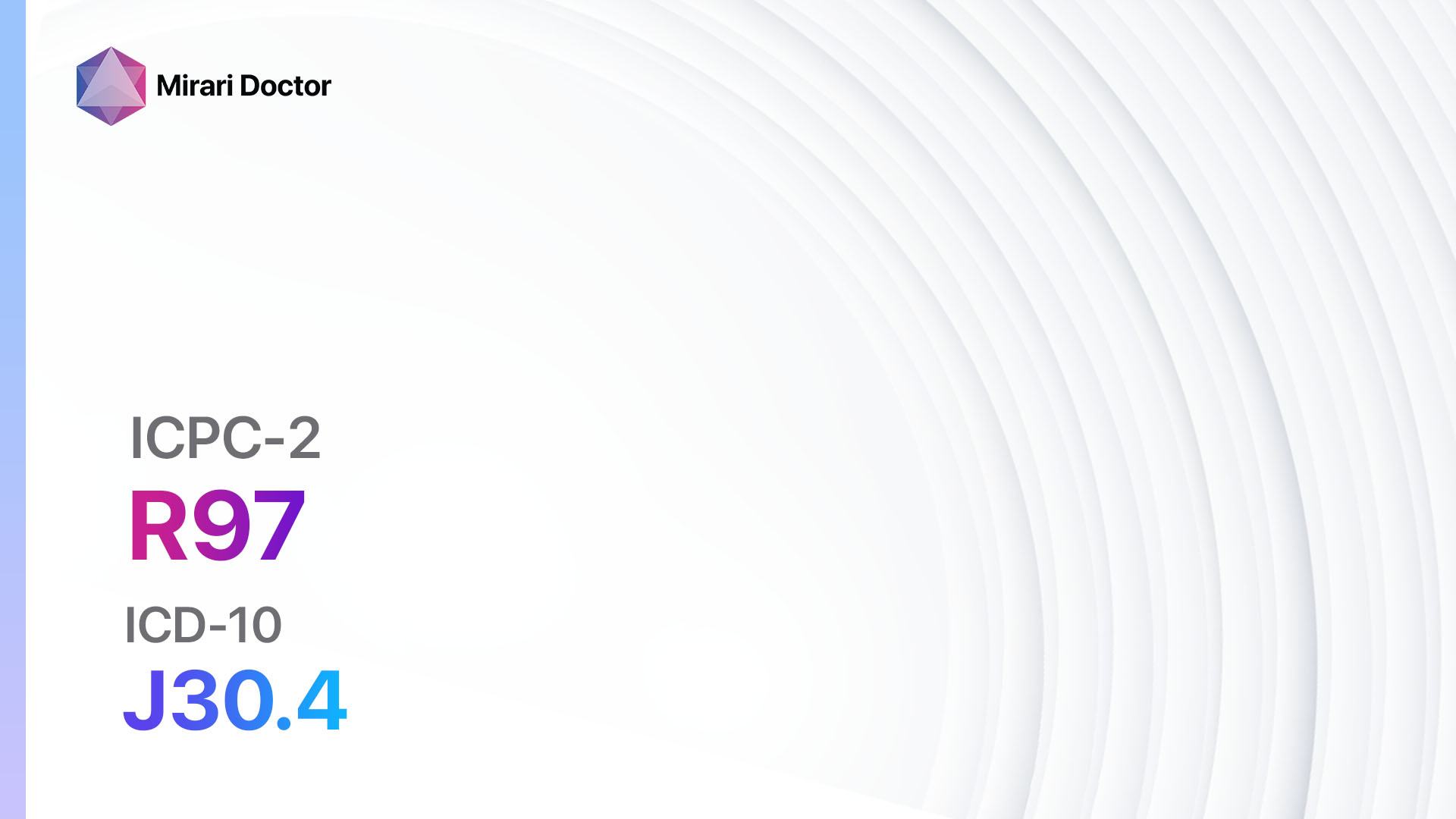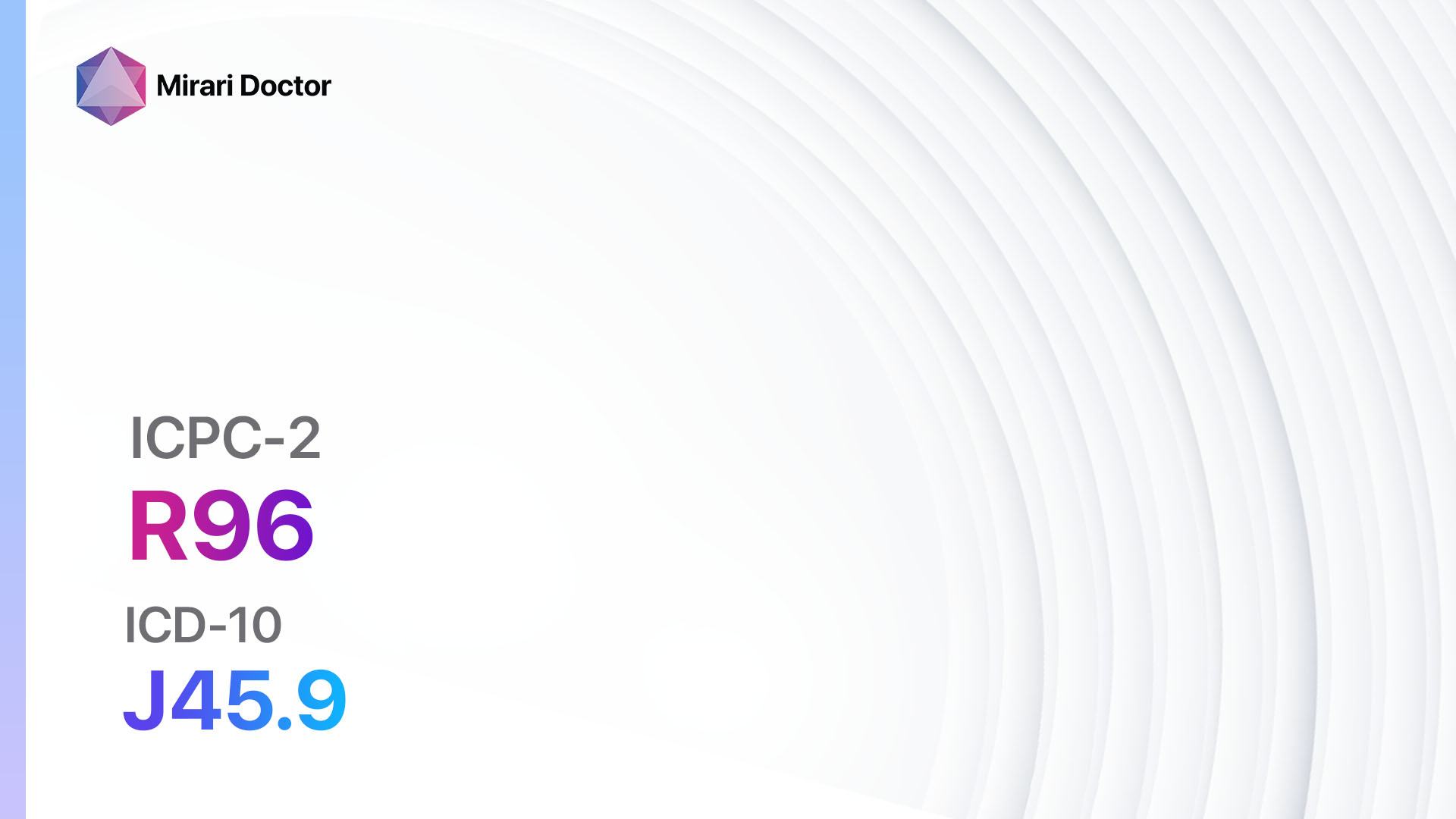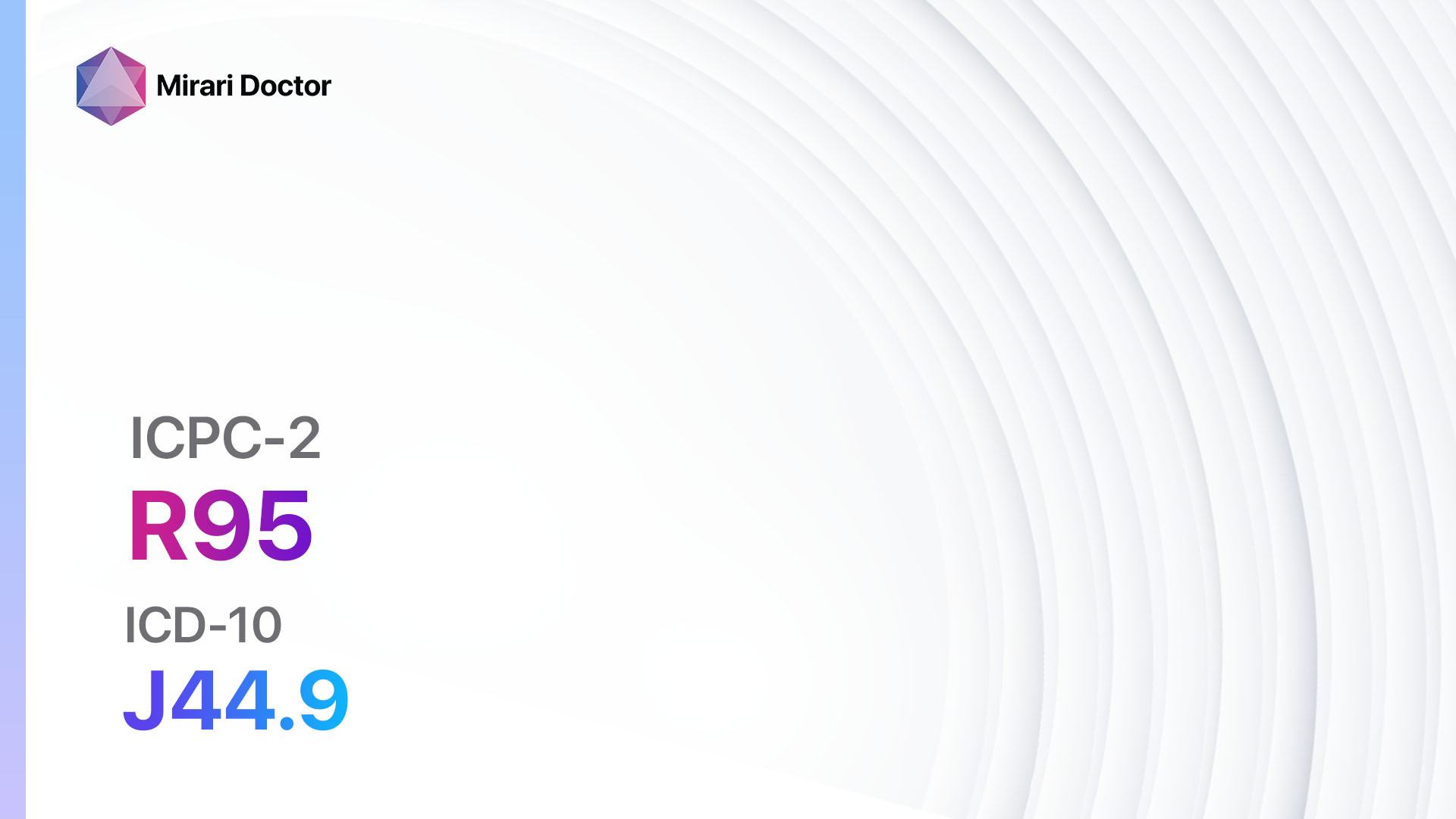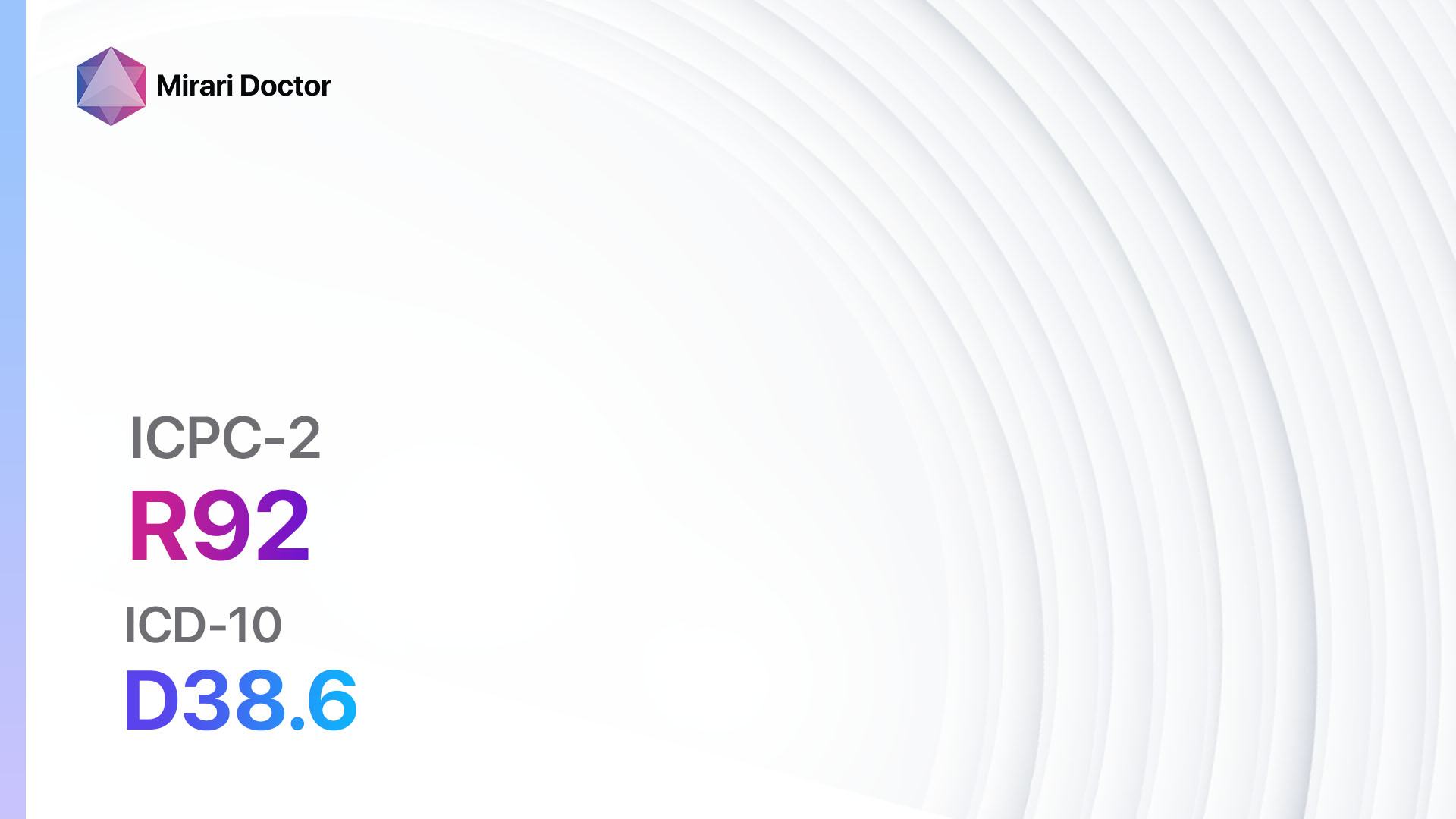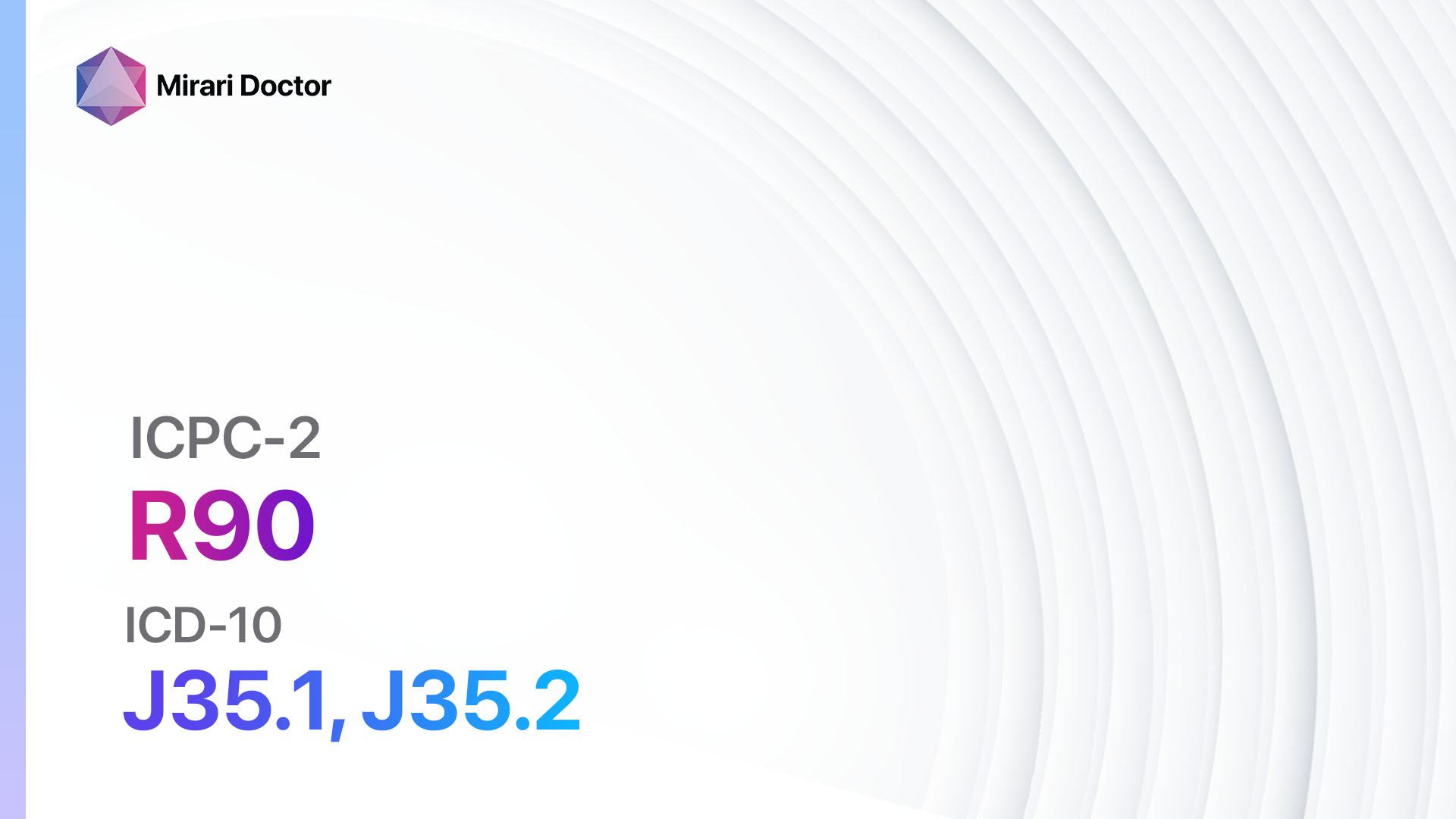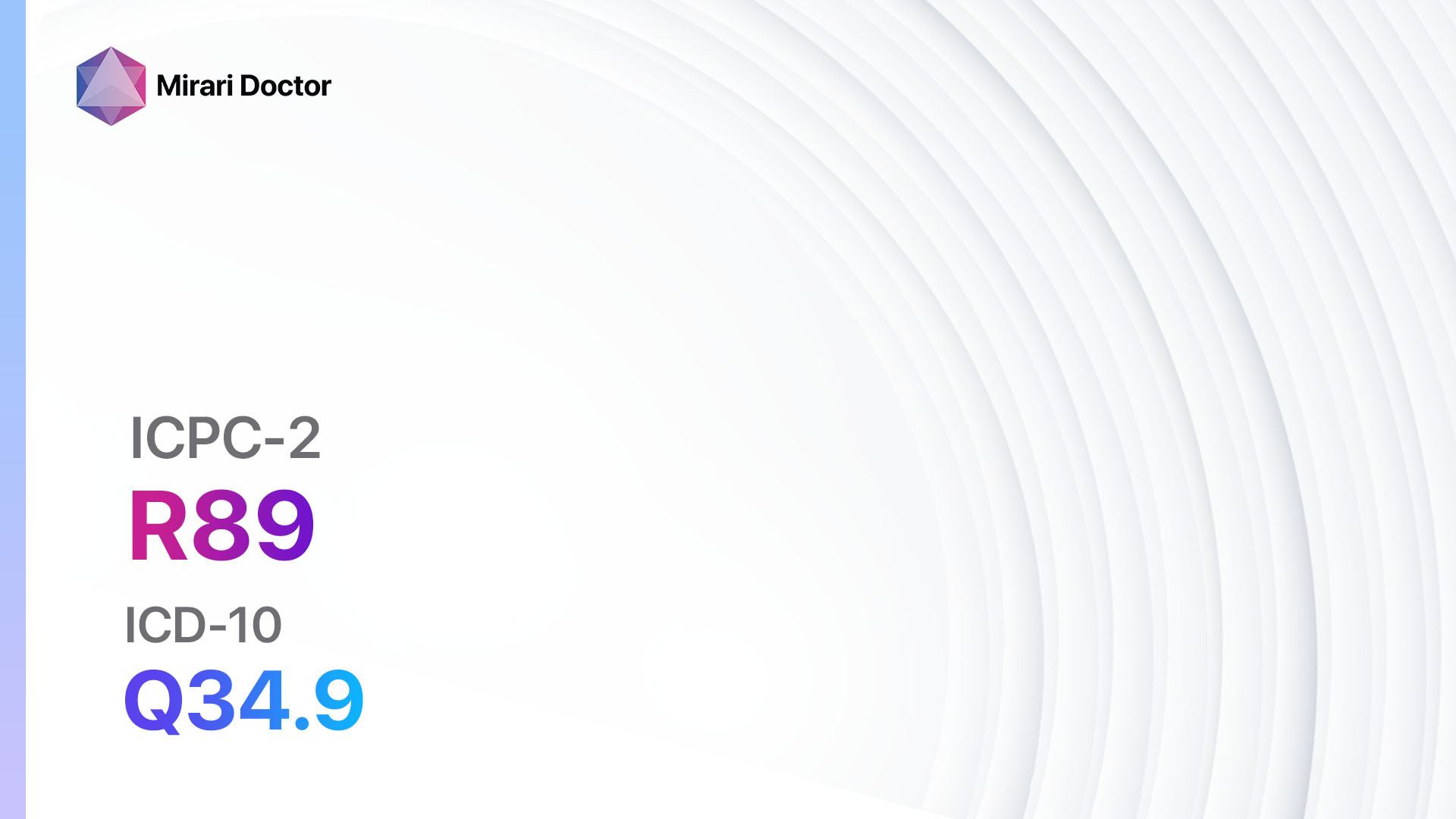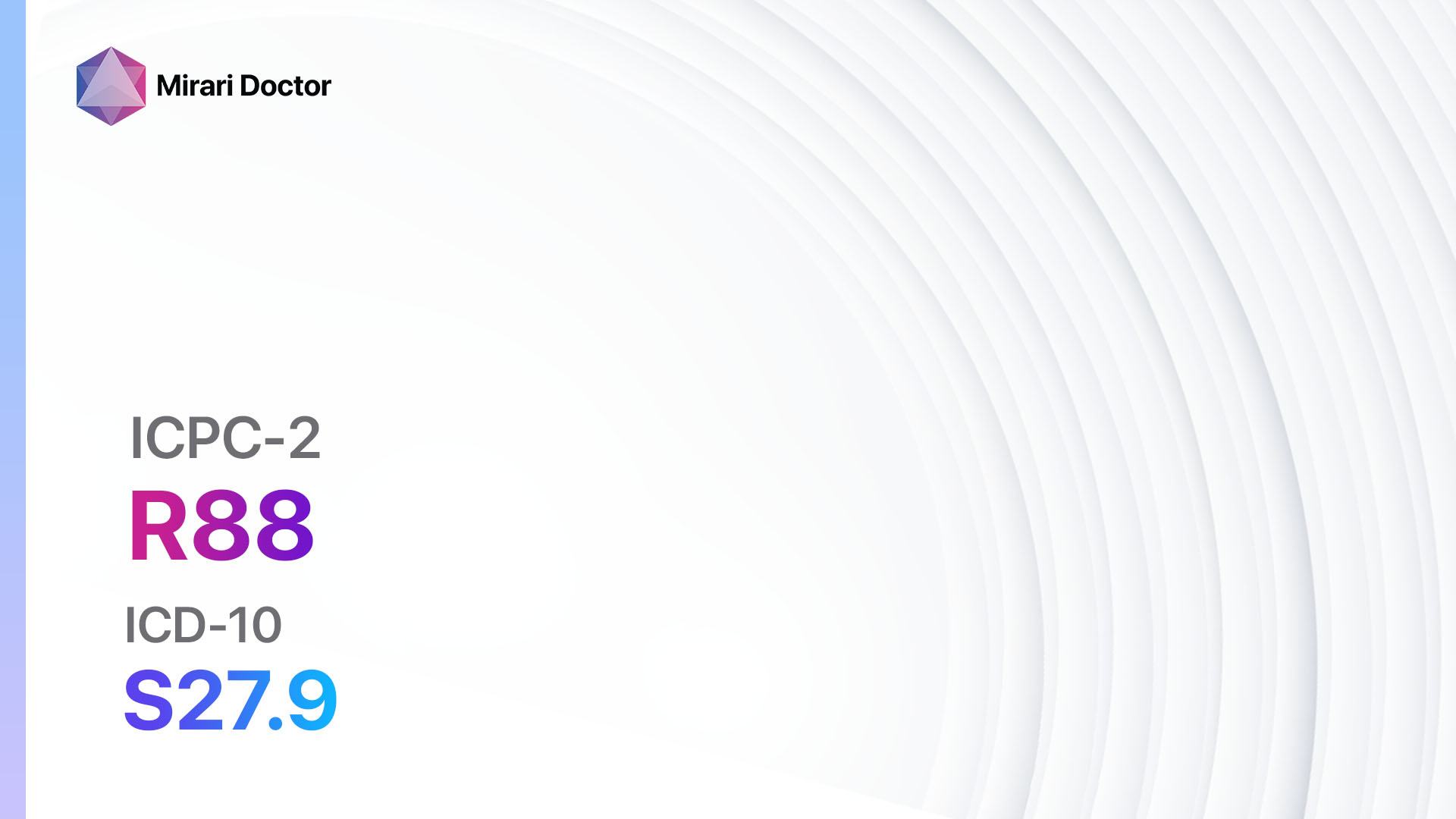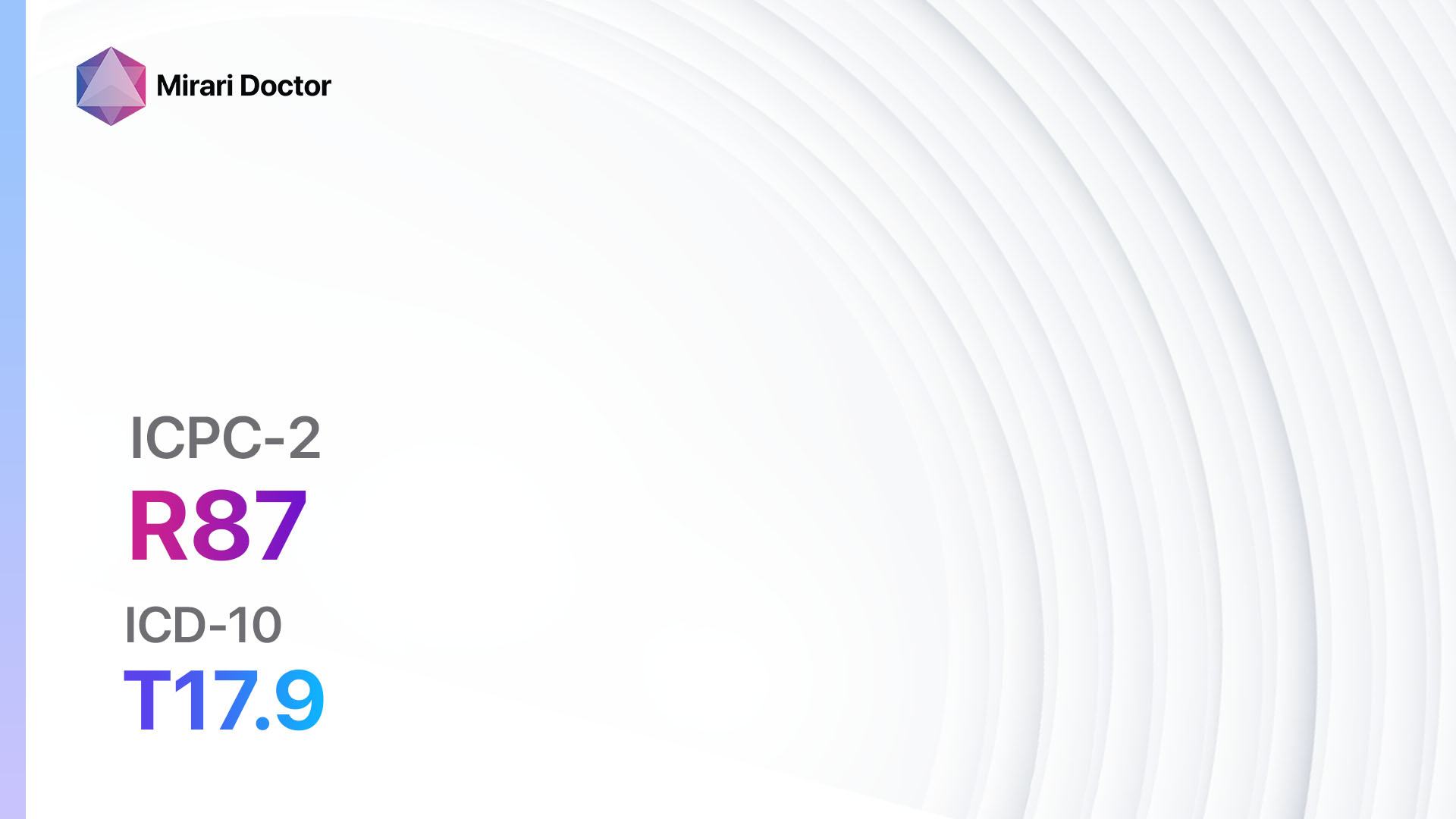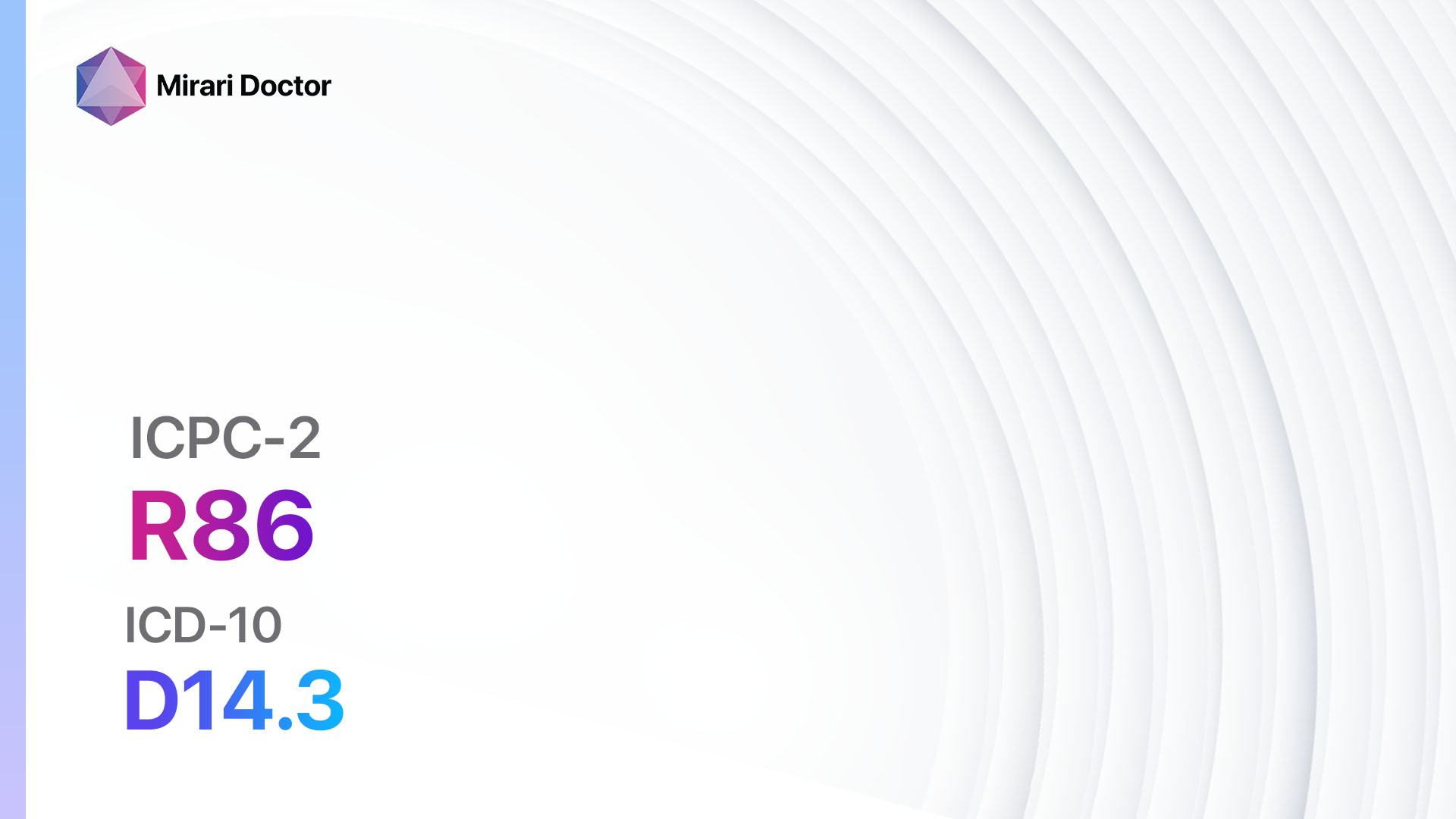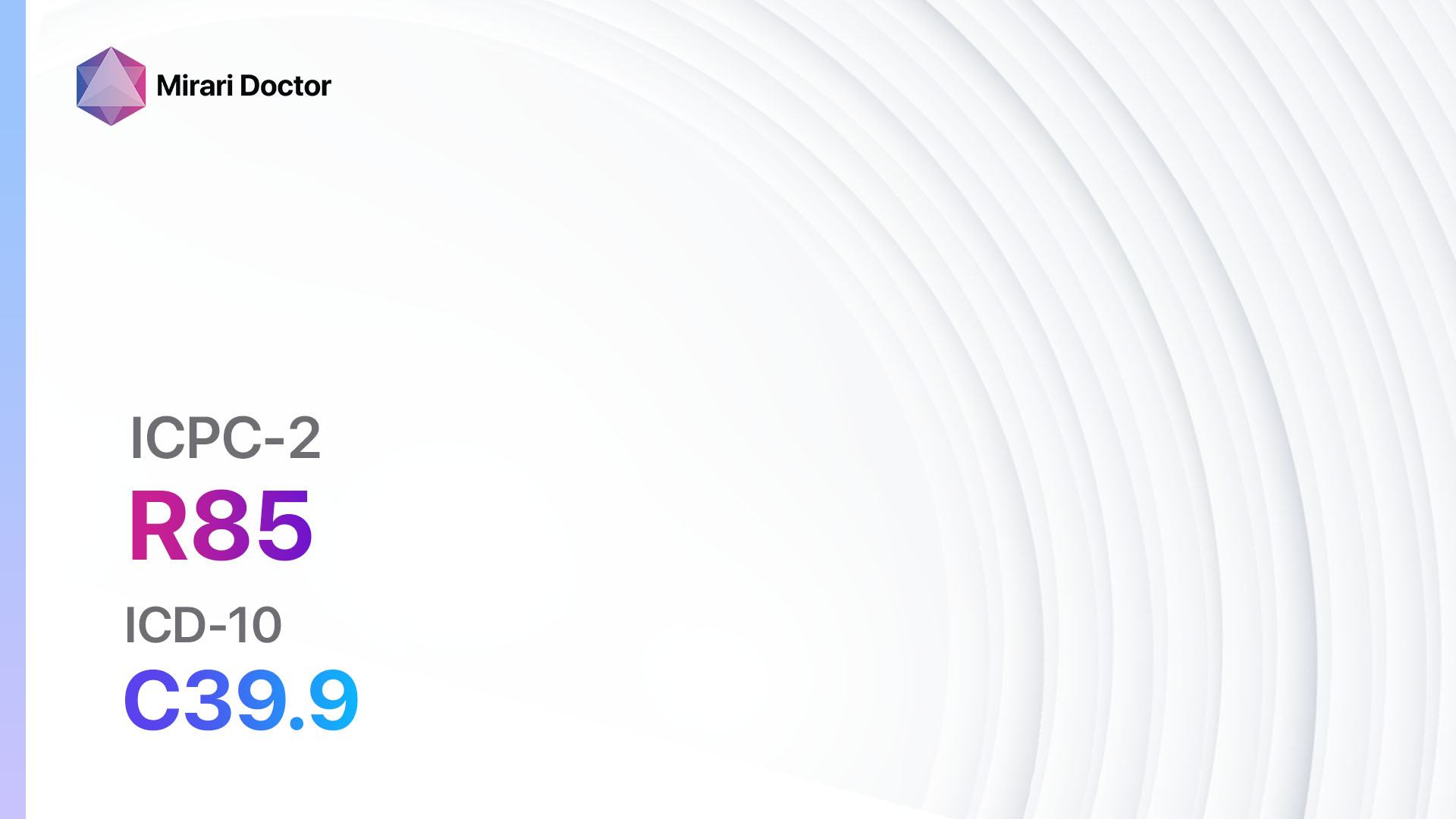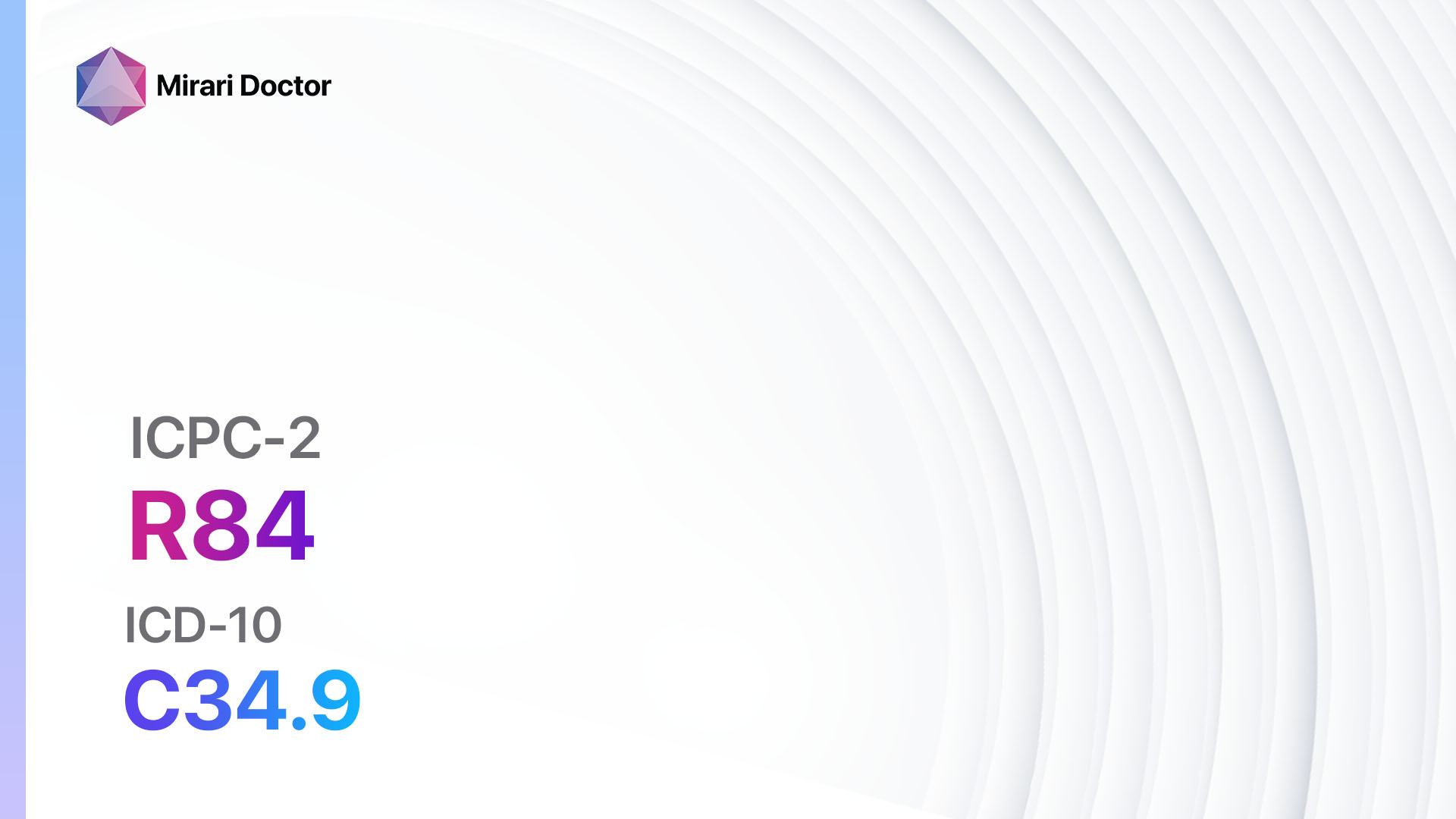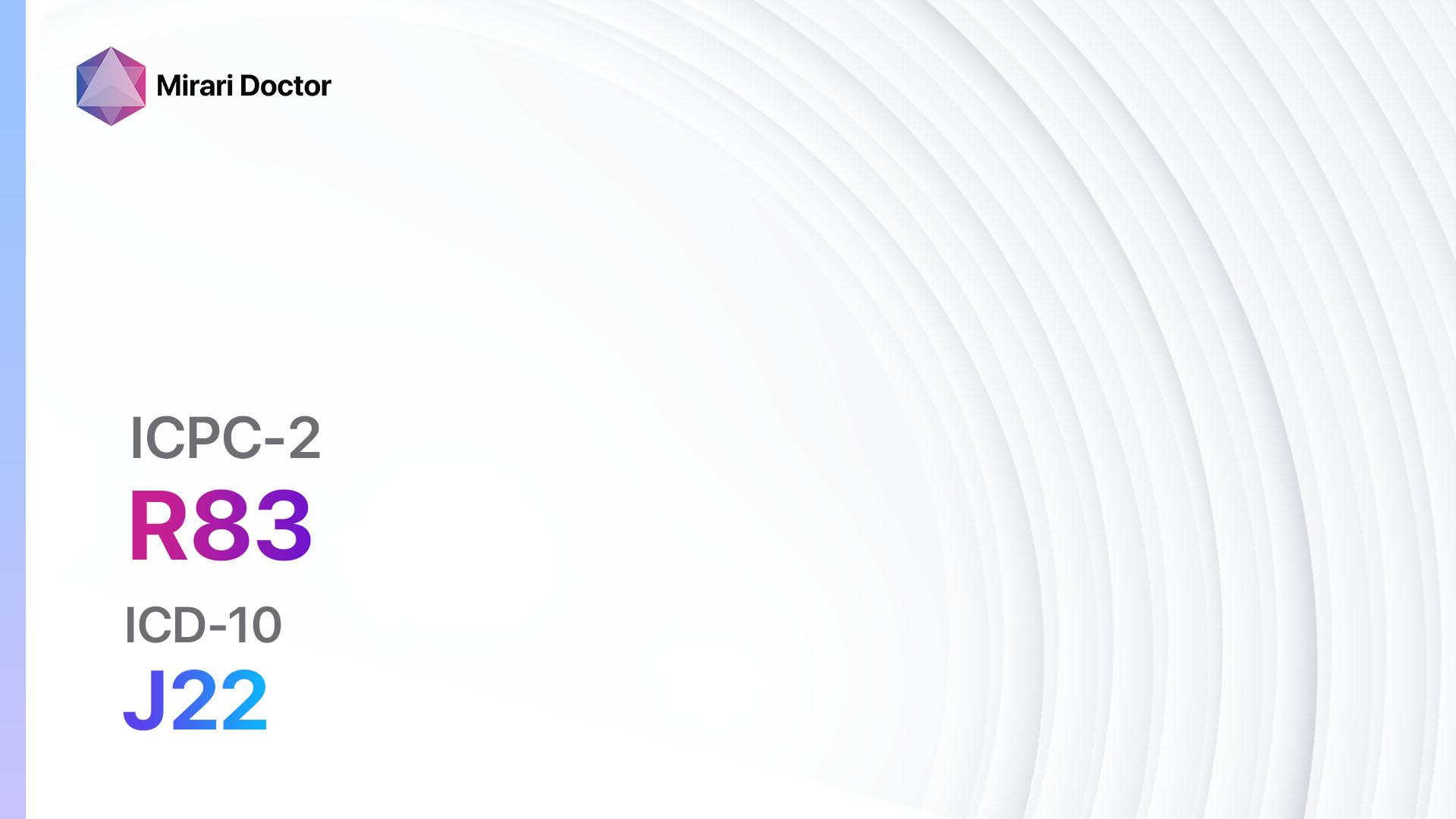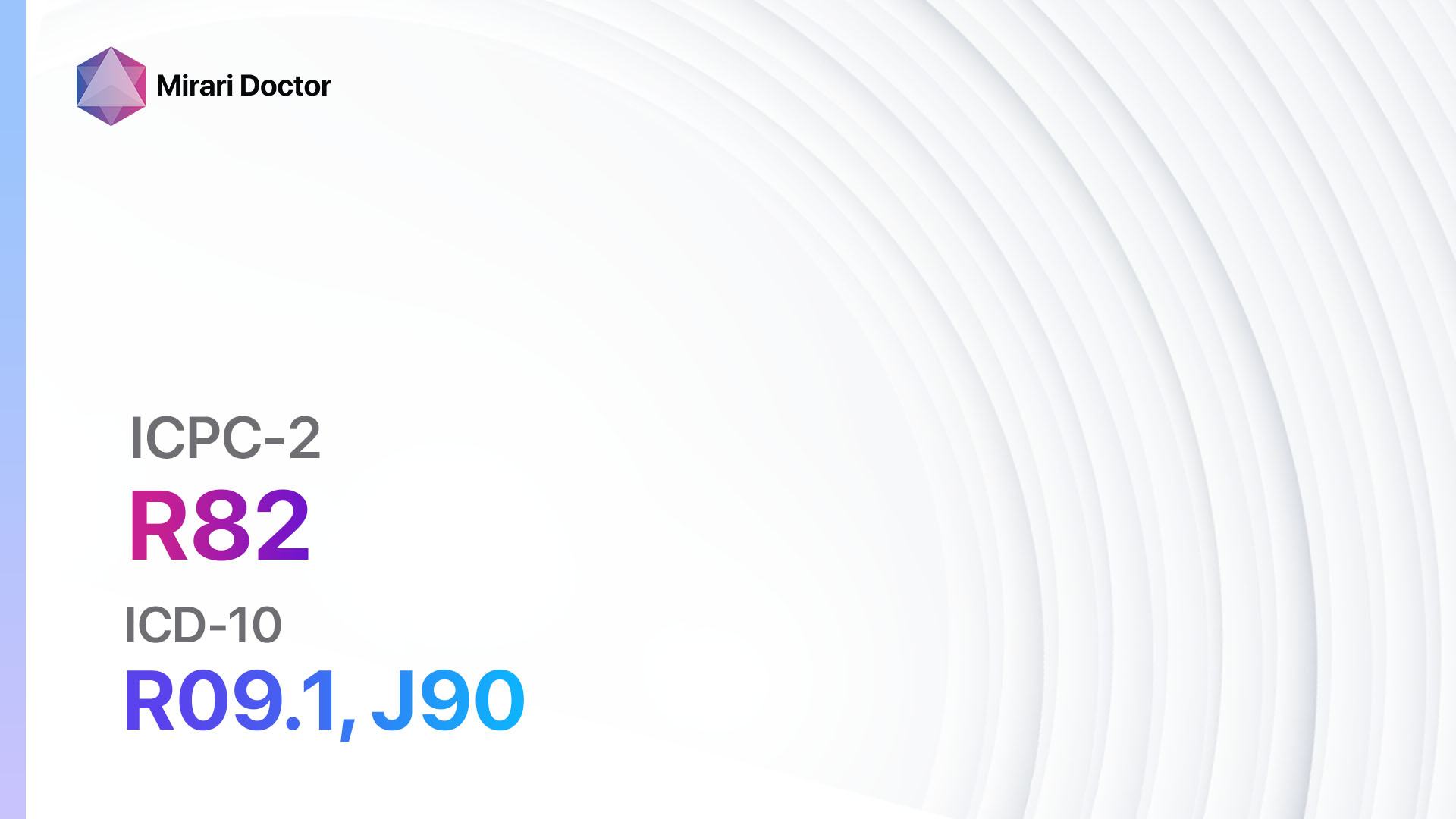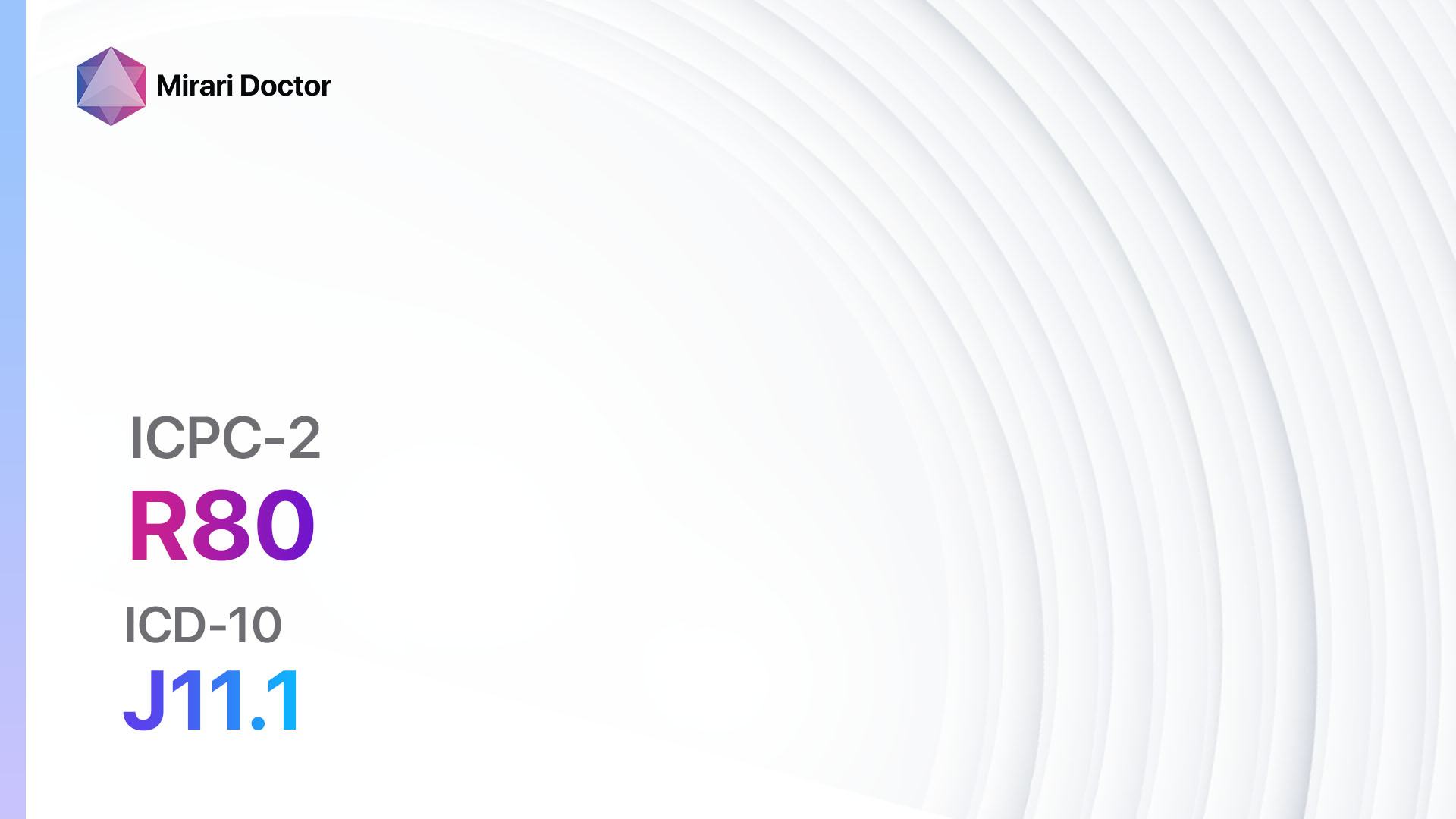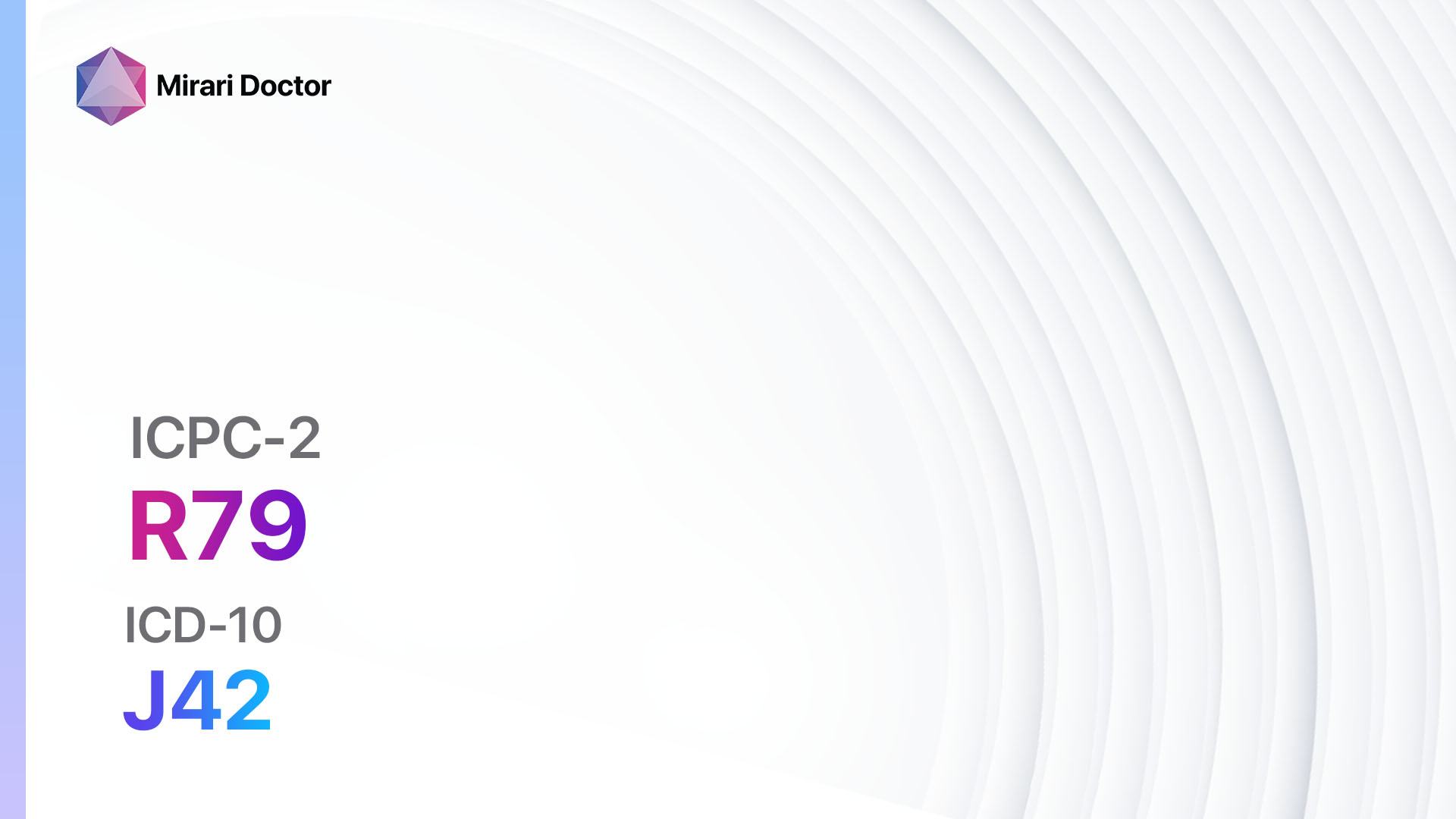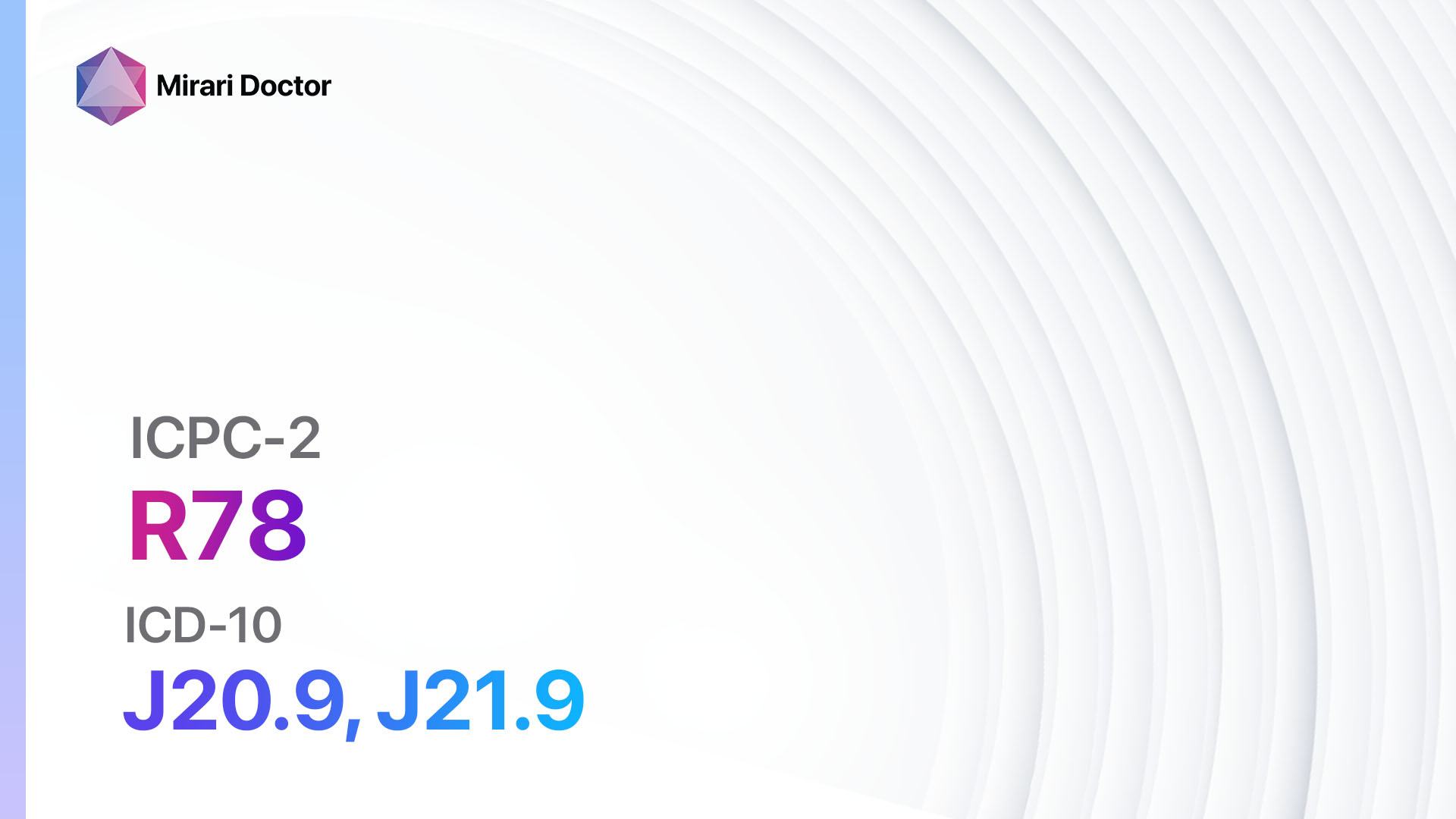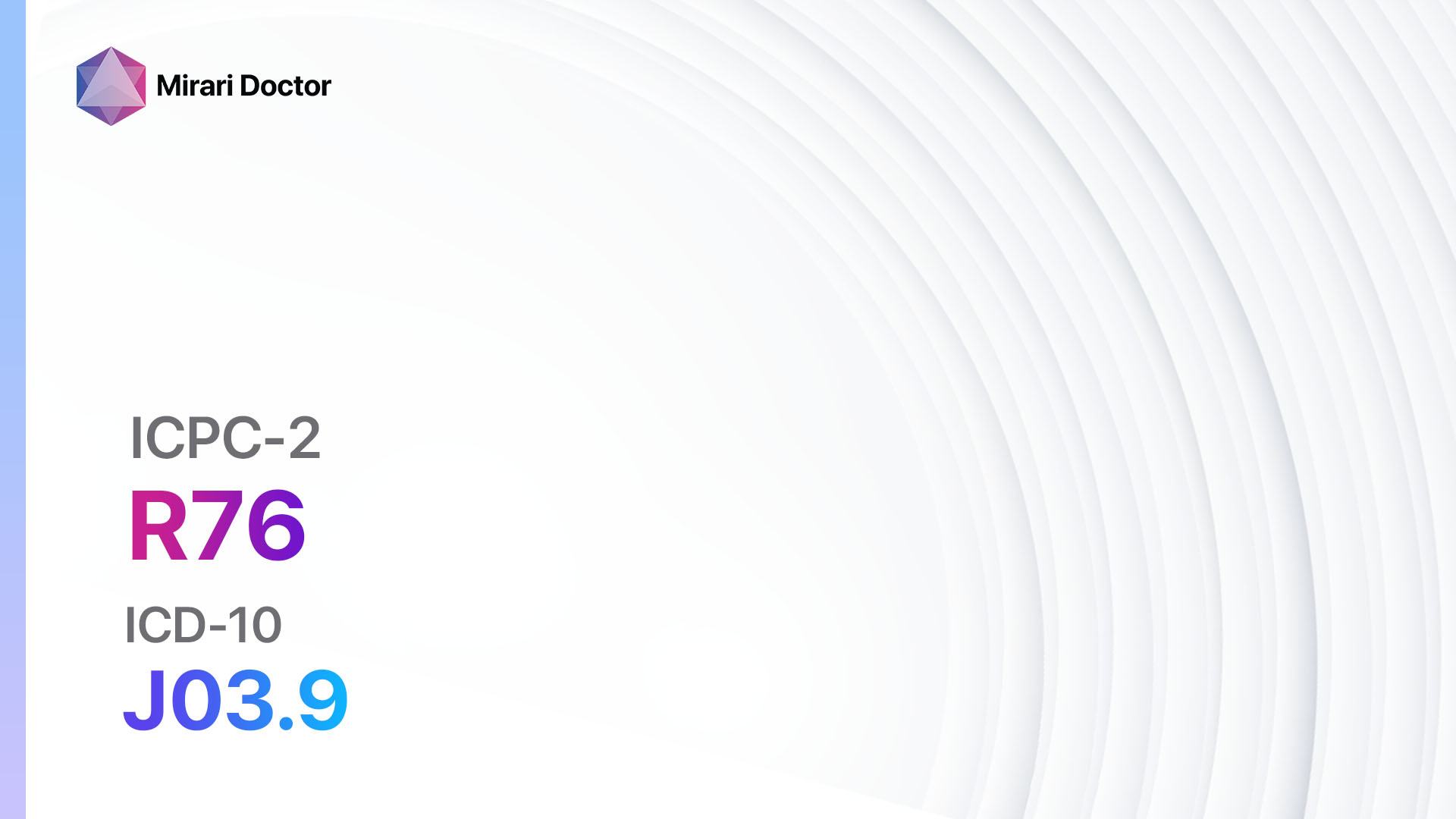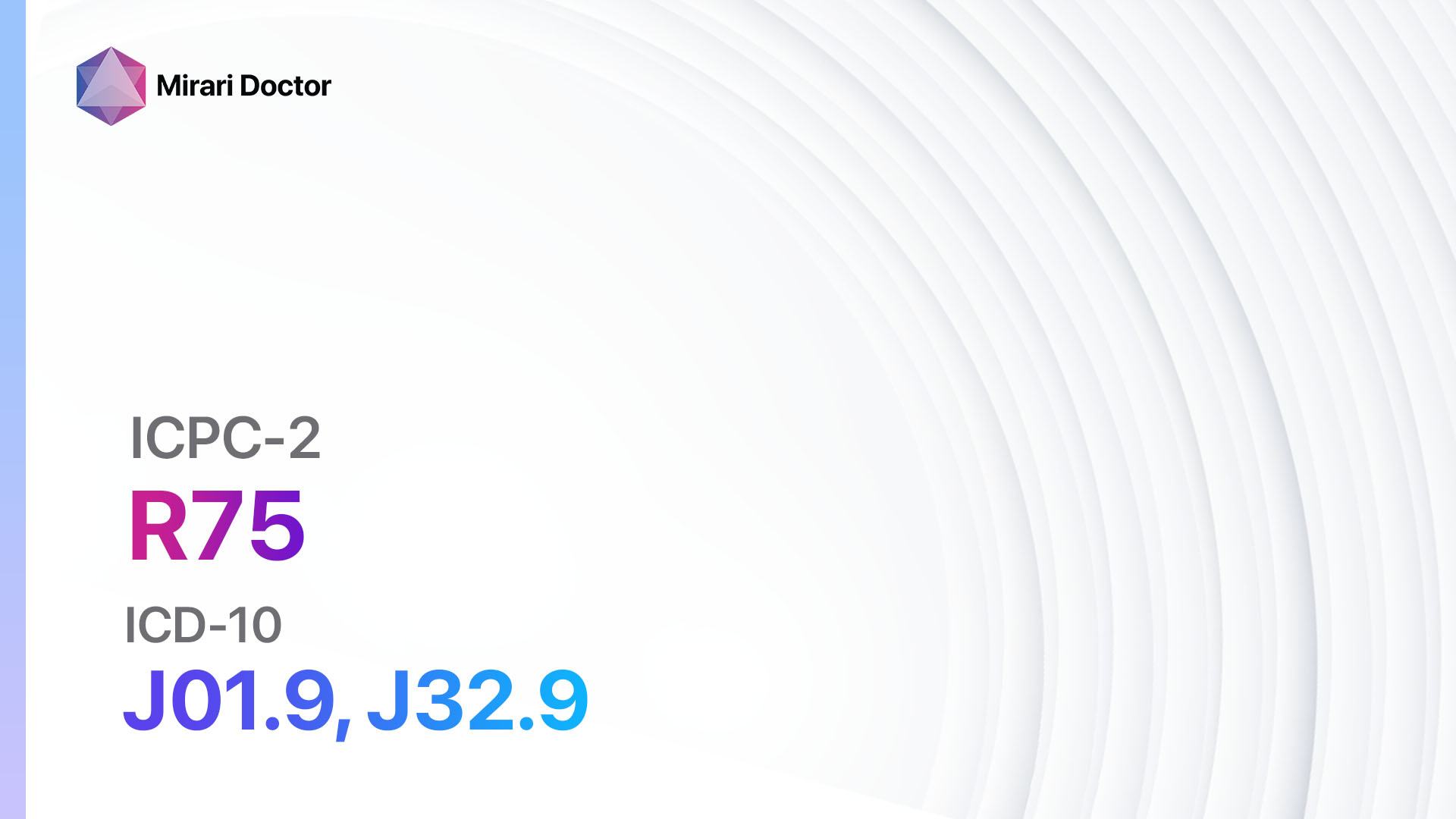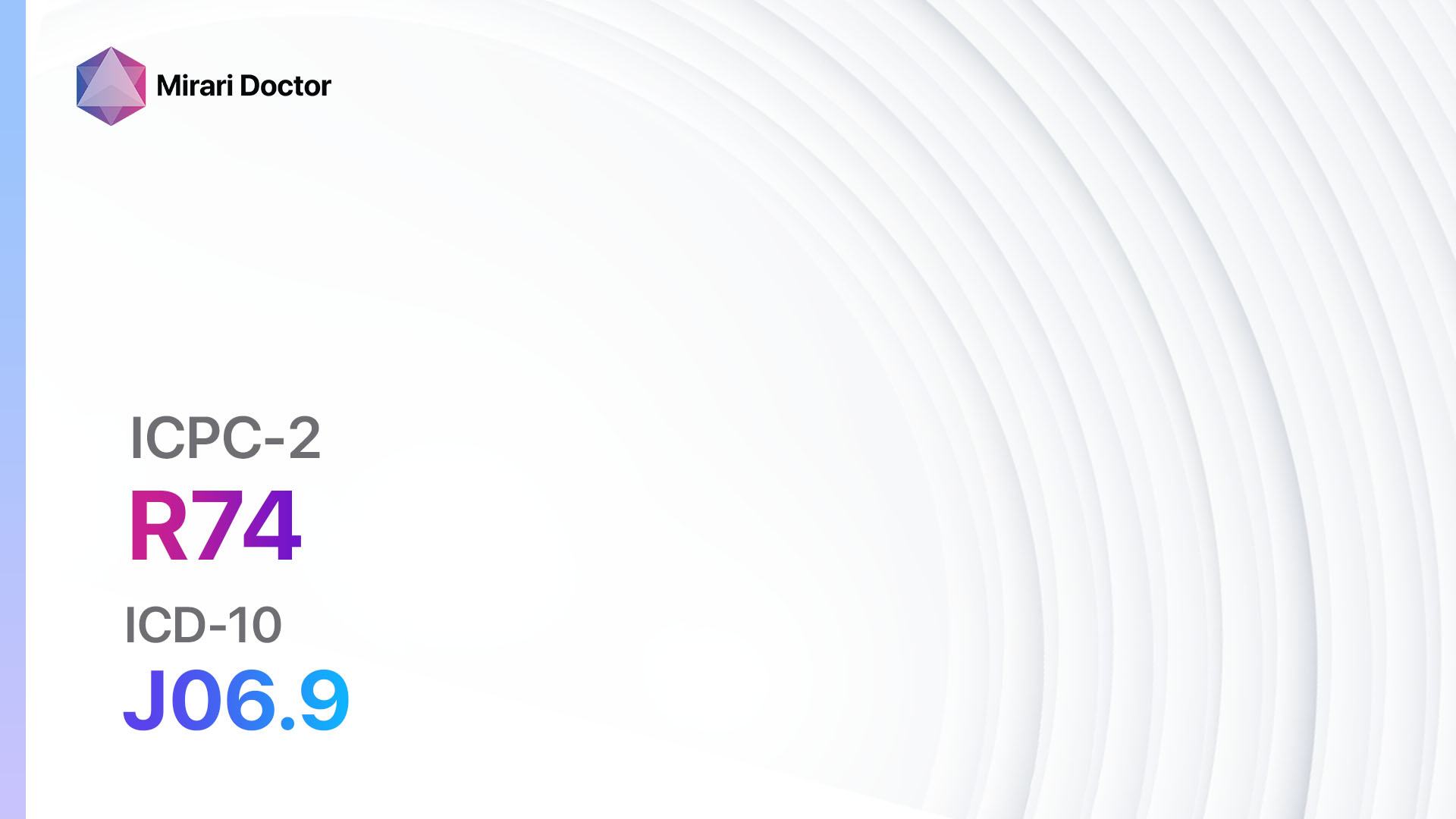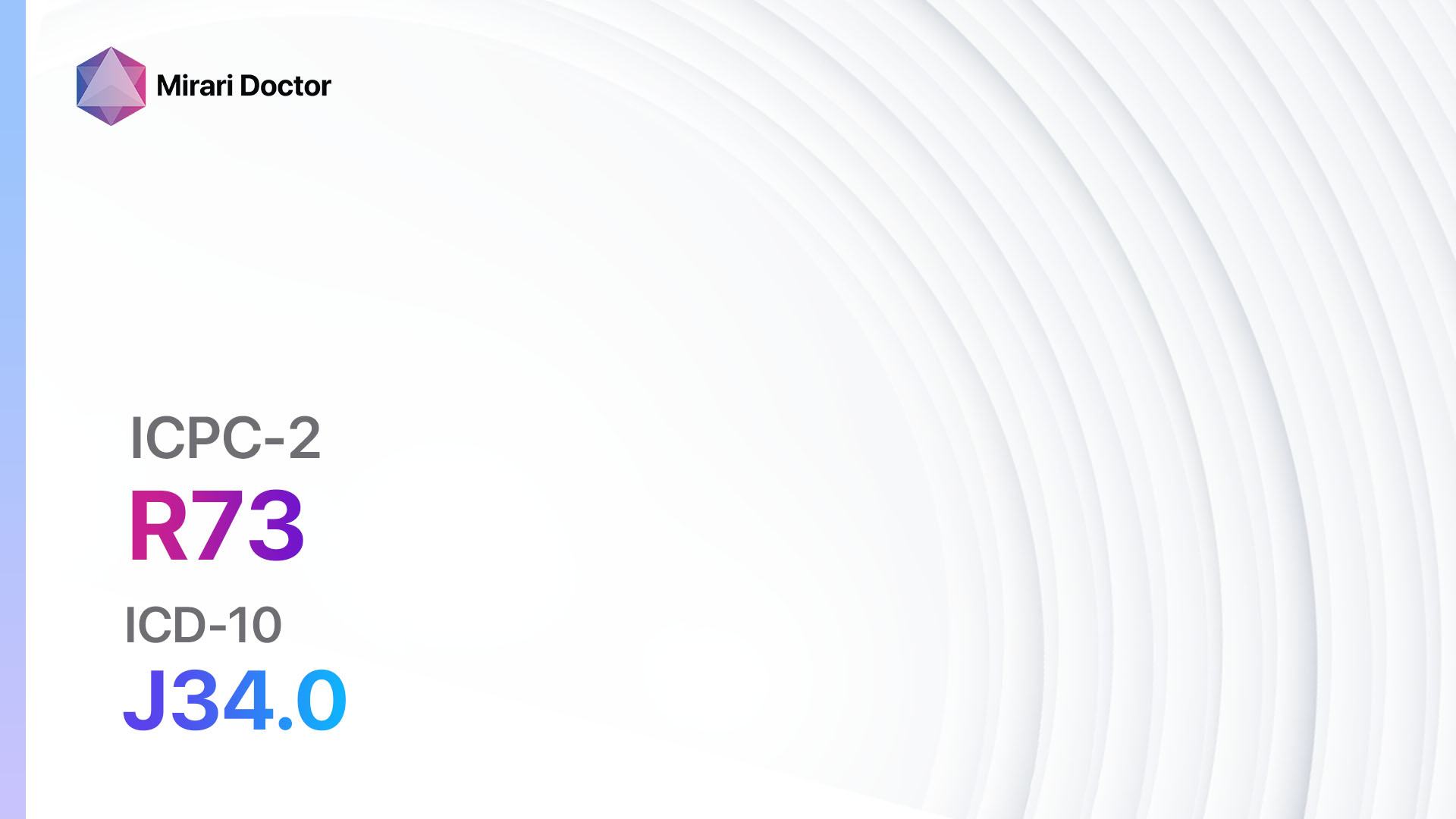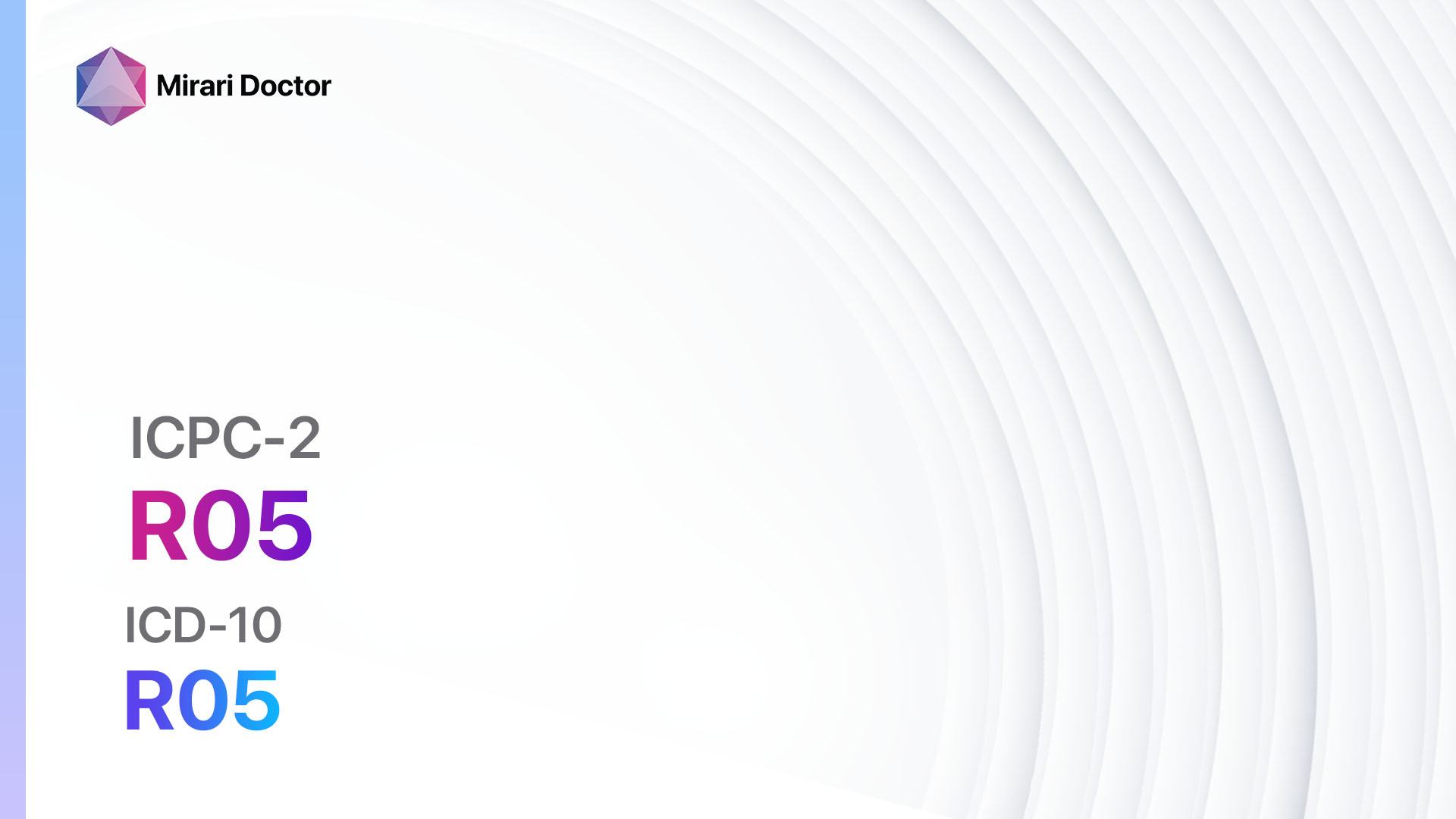
Introduction
Cough is a common symptom that can be caused by various underlying conditions. It is characterized by the sudden expulsion of air from the lungs, often accompanied by a distinctive sound. Coughing is the body’s natural way of clearing the airways and can be triggered by irritants, infections, allergies, or underlying respiratory conditions[1]. The aim of this guide is to provide a comprehensive overview of the diagnostic steps, possible interventions, and lifestyle modifications that can help manage and alleviate cough symptoms.
Codes
Symptoms
- Persistent coughing
- Coughing up phlegm or mucus
- Wheezing or shortness of breath
- Chest discomfort or tightness
- Sore throat or hoarseness[2]
Causes
- Respiratory infections (such as the common cold, flu, or pneumonia)
- Allergies (such as hay fever or allergic rhinitis)
- Asthma or chronic obstructive pulmonary disease (COPD)
- Gastroesophageal reflux disease (GERD)
- Smoking or exposure to secondhand smoke
- Environmental irritants (such as dust, pollution, or strong odors)[3][4]
Diagnostic Steps
Medical History
- Gather information about the duration and frequency of the cough
- Ask about any associated symptoms, such as fever, chest pain, or difficulty breathing
- Inquire about any recent respiratory infections or exposure to allergens or irritants
- Assess the patient’s smoking history and exposure to secondhand smoke
- Determine if the cough is worse at certain times of the day or in specific environments[5]
Physical Examination
- Inspect the throat, nose, and ears for signs of infection or inflammation
- Auscultate the lungs to assess for abnormal breath sounds or wheezing
- Percuss the chest to check for dullness or increased resonance
- Palpate the lymph nodes to evaluate for enlargement or tenderness
- Measure vital signs, including temperature, heart rate, and respiratory rate[6]
Laboratory Tests
- Complete blood count (CBC) to assess for infection or inflammation
- Sputum culture to identify the presence of bacteria or fungi
- Allergy testing to determine if the cough is triggered by specific allergens
- Pulmonary function tests (spirometry) to evaluate lung function and assess for asthma or COPD
- Chest X-ray to rule out pneumonia or other structural abnormalities[7]
Diagnostic Imaging
- Chest X-ray to evaluate the lungs and identify any abnormalities
- Computed tomography (CT) scan to provide more detailed images of the chest and lungs
- Bronchoscopy to visualize the airways and collect samples for further analysis
- Magnetic resonance imaging (MRI) to assess the structures of the chest and lungs[8]
Other Tests
- Peak flow measurement to monitor lung function and assess for asthma
- Methacholine challenge test to diagnose or rule out asthma
- pH monitoring to evaluate for gastroesophageal reflux disease (GERD)
- Nasal endoscopy to assess for nasal polyps or other structural abnormalities
- Sleep study (polysomnography) to evaluate for sleep-related breathing disorders[9]
Follow-up and Patient Education
- Schedule a follow-up appointment to review test results and adjust treatment plan if necessary
- Provide education on proper cough etiquette, such as covering the mouth and nose with a tissue or elbow when coughing
- Discuss the importance of staying hydrated and avoiding irritants or triggers that may worsen the cough
- Encourage the patient to seek medical attention if the cough persists or worsens, or if new symptoms develop[10]
Possible Interventions
Traditional Interventions
Medications:
Top 5 drugs for cough:
- Antitussives (e.g., Dextromethorphan, Codeine):
- Cost: Generic versions can range from $5 to $20.
- Contraindications: Respiratory depression, asthma, chronic bronchitis.
- Side effects: Drowsiness, dizziness, constipation.
- Severe side effects: Allergic reactions, serotonin syndrome.
- Drug interactions: MAO inhibitors, alcohol, sedatives.
- Warning: Avoid use in children under 4 years old.
- Expectorants (e.g., Guaifenesin):
- Cost: Generic versions can range from $5 to $15.
- Contraindications: Hypersensitivity to guaifenesin.
- Side effects: Nausea, vomiting, dizziness.
- Severe side effects: Allergic reactions, rash.
- Drug interactions: None reported.
- Warning: Drink plenty of fluids while taking this medication.
- Antihistamines (e.g., Diphenhydramine, Loratadine):
- Cost: Generic versions can range from $5 to $20.
- Contraindications: Acute asthma, narrow-angle glaucoma.
- Side effects: Drowsiness, dry mouth, blurred vision.
- Severe side effects: Severe allergic reactions, hallucinations.
- Drug interactions: Alcohol, sedatives, other antihistamines.
- Warning: Avoid driving or operating machinery while taking this medication.
- Inhaled corticosteroids (e.g., Fluticasone, Budesonide):
- Cost: Brand-name versions can range from $50 to $200, while generic versions can be more affordable.
- Contraindications: Hypersensitivity to corticosteroids.
- Side effects: Sore throat, hoarseness, oral thrush.
- Severe side effects: Adrenal suppression, osteoporosis.
- Drug interactions: None reported.
- Warning: Rinse mouth after each use to reduce the risk of oral thrush.
- Bronchodilators (e.g., Albuterol, Salbutamol):
- Cost: Generic versions can range from $10 to $30.
- Contraindications: Hypersensitivity to bronchodilators.
- Side effects: Tremor, palpitations, headache.
- Severe side effects: Chest pain, irregular heartbeat.
- Drug interactions: Beta-blockers, diuretics.
- Warning: Use with caution in patients with cardiovascular disease.
Alternative Drugs:
- Honey: Can help soothe cough and throat irritation. Cost: Varies depending on the brand and quantity.
- Herbal cough syrups: Some herbal remedies, such as ivy leaf extract or marshmallow root, may provide relief. Cost: Varies depending on the brand and quantity.
- Steam inhalation: Inhaling steam from hot water or a humidifier can help loosen mucus and relieve cough. Cost: Varies depending on the method used.
- Throat lozenges: Can temporarily relieve cough and soothe the throat. Cost: Varies depending on the brand and quantity.
- Nasal saline irrigation: Can help alleviate postnasal drip and reduce cough. Cost: Varies depending on the brand and quantity.
Surgical Procedures:
- Surgical intervention is not typically required for the treatment of cough.
Alternative Interventions
- Acupuncture: May help reduce cough severity and frequency. Cost: $60-$120 per session.
- Herbal remedies: Certain herbs, such as licorice root or mullein, have been used to alleviate cough symptoms. Cost: Varies depending on the specific herb and preparation.
- Breathing exercises: Techniques such as pursed-lip breathing or diaphragmatic breathing can help control coughing episodes. Cost: Free.
- Saltwater gargles: Can help soothe a sore throat and reduce cough. Cost: Minimal (salt and water).
- Warm fluids: Drinking warm liquids, such as herbal tea or warm water with honey, can provide temporary relief. Cost: Varies depending on the beverage.
Lifestyle Interventions
- Avoiding irritants: Encourage the patient to avoid exposure to smoke, strong odors, and other environmental irritants that may trigger or worsen cough symptoms. Cost: Free.
- Hydration: Drinking plenty of fluids can help thin mucus and reduce cough. Cost: Minimal (water).
- Humidification: Using a humidifier or taking a steamy shower can help moisten the airways and alleviate cough. Cost: Varies depending on the method used.
- Elevating the head: Sleeping with an extra pillow or using a wedge pillow can help reduce coughing at night. Cost: Minimal (additional pillow or wedge pillow).
- Avoiding triggers: If the cough is triggered by specific allergens, the patient should try to minimize exposure to those triggers. Cost: Varies depending on the specific trigger.
It is important to note that the cost ranges provided are approximate and may vary depending on the location and availability of the interventions.
Mirari Cold Plasma Alternative Intervention
Understanding Mirari Cold Plasma
- Safe and Non-Invasive Treatment: Mirari Cold Plasma is a safe and non-invasive treatment option for various skin conditions. It does not require incisions, minimizing the risk of scarring, bleeding, or tissue damage.
- Efficient Extraction of Foreign Bodies: Mirari Cold Plasma facilitates the removal of foreign bodies from the skin by degrading and dissociating organic matter, allowing easier access and extraction.
- Pain Reduction and Comfort: Mirari Cold Plasma has a local analgesic effect, providing pain relief during the treatment, making it more comfortable for the patient.
- Reduced Risk of Infection: Mirari Cold Plasma has antimicrobial properties, effectively killing bacteria and reducing the risk of infection.
- Accelerated Healing and Minimal Scarring: Mirari Cold Plasma stimulates wound healing and tissue regeneration, reducing healing time and minimizing the formation of scars.
Mirari Cold Plasma Prescription
Video instructions for using Mirari Cold Plasma Device – R05 Cough (ICD-10:R05)
| Mild | Moderate | Severe |
| Mode setting: 1 (Infection) Location: 4 (Heart, Bile & Pancreas) Morning: 15 minutes, Evening: 15 minutes |
Mode setting: 1 (Infection) Location: 4 (Heart, Bile & Pancreas) Morning: 30 minutes, Lunch: 30 minutes, Evening: 30 minutes |
Mode setting: 1 (Infection) Location: 4 (Heart, Bile & Pancreas) Morning: 30 minutes, Lunch: 30 minutes, Evening: 30 minutes |
| Mode setting: 2 (Wound Healing) Location: 4 (Heart, Bile & Pancreas) Morning: 15 minutes, Evening: 15 minutes |
Mode setting: 2 (Wound Healing) Location: 4 (Heart, Bile & Pancreas) Morning: 30 minutes, Lunch: 30 minutes, Evening: 30 minutes |
Mode setting: 2 (Wound Healing) Location: 4 (Heart, Bile & Pancreas) Morning: 30 minutes, Lunch: 30 minutes, Evening: 30 minutes |
| Mode setting: 3 (Antiviral Therapy) Location: 6 (Throat, Lymphatic & Thyroid) Morning: 15 minutes, Evening: 15 minutes |
Mode setting: 3 (Antiviral Therapy) Location: 6 (Throat, Lymphatic & Thyroid) Morning: 30 minutes, Lunch: 30 minutes, Evening: 30 minutes |
Mode setting: 3 (Antiviral Therapy) Location: 6 (Throat, Lymphatic & Thyroid) Morning: 30 minutes, Lunch: 30 minutes, Evening: 30 minutes |
| Total Morning: 45 minutes approx. $7.50 USD, Evening: 45 minutes approx. $7.50 USD |
Total Morning: 90 minutes approx. $15 USD, Lunch: 90 minutes approx. $15 USD, Evening: 90 minutes approx. $15 USD |
Total Morning: 90 minutes approx. $15 USD, Lunch: 90 minutes approx. $15 USD, Evening: 90 minutes approx. $15 USD |
| Usual treatment for 7-60 days approx. $105 USD – $900 USD | Usual treatment for 6-8 weeks approx. $1,890 USD – $2,520 USD |
Usual treatment for 3-6 months approx. $4,050 USD – $8,100 USD
|
 |
|
Use the Mirari Cold Plasma device to treat Cough effectively.
WARNING: MIRARI COLD PLASMA IS DESIGNED FOR THE HUMAN BODY WITHOUT ANY ARTIFICIAL OR THIRD PARTY PRODUCTS. USE OF OTHER PRODUCTS IN COMBINATION WITH MIRARI COLD PLASMA MAY CAUSE UNPREDICTABLE EFFECTS, HARM OR INJURY. PLEASE CONSULT A MEDICAL PROFESSIONAL BEFORE COMBINING ANY OTHER PRODUCTS WITH USE OF MIRARI.
Step 1: Cleanse the Skin
- Start by cleaning the affected area of the skin with a gentle cleanser or mild soap and water. Gently pat the area dry with a clean towel.
Step 2: Prepare the Mirari Cold Plasma device
- Ensure that the Mirari Cold Plasma device is fully charged or has fresh batteries as per the manufacturer’s instructions. Make sure the device is clean and in good working condition.
- Switch on the Mirari device using the power button or by following the specific instructions provided with the device.
- Some Mirari devices may have adjustable settings for intensity or treatment duration. Follow the manufacturer’s instructions to select the appropriate settings based on your needs and the recommended guidelines.
Step 3: Apply the Device
- Place the Mirari device in direct contact with the affected area of the skin. Gently glide or hold the device over the skin surface, ensuring even coverage of the area experiencing.
- Slowly move the Mirari device in a circular motion or follow a specific pattern as indicated in the user manual. This helps ensure thorough treatment coverage.
Step 4: Monitor and Assess:
- Keep track of your progress and evaluate the effectiveness of the Mirari device in managing your Cough. If you have any concerns or notice any adverse reactions, consult with your health care professional.
Note
This guide is for informational purposes only and should not replace the advice of a medical professional. Always consult with your healthcare provider or a qualified medical professional for personal advice, diagnosis, or treatment. Do not solely rely on the information presented here for decisions about your health. Use of this information is at your own risk. The authors of this guide, nor any associated entities or platforms, are not responsible for any potential adverse effects or outcomes based on the content.
Mirari Cold Plasma System Disclaimer
- Purpose: The Mirari Cold Plasma System is a Class 2 medical device designed for use by trained healthcare professionals. It is registered for use in Thailand and Vietnam. It is not intended for use outside of these locations.
- Informational Use: The content and information provided with the device are for educational and informational purposes only. They are not a substitute for professional medical advice or care.
- Variable Outcomes: While the device is approved for specific uses, individual outcomes can differ. We do not assert or guarantee specific medical outcomes.
- Consultation: Prior to utilizing the device or making decisions based on its content, it is essential to consult with a Certified Mirari Tele-Therapist and your medical healthcare provider regarding specific protocols.
- Liability: By using this device, users are acknowledging and accepting all potential risks. Neither the manufacturer nor the distributor will be held accountable for any adverse reactions, injuries, or damages stemming from its use.
- Geographical Availability: This device has received approval for designated purposes by the Thai and Vietnam FDA. As of now, outside of Thailand and Vietnam, the Mirari Cold Plasma System is not available for purchase or use.
References
- Irwin RS, French CL, Chang AB, Altman KW; CHEST Expert Cough Panel. Classification of Cough as a Symptom in Adults and Management Algorithms: CHEST Guideline and Expert Panel Report. Chest. 2018 Jan;153(1):196-209. doi: 10.1016/j.chest.2017.10.016. Epub 2017 Nov 4. PMID: 29080708.
- Chung KF, Pavord ID. Prevalence, pathogenesis, and causes of chronic cough. Lancet. 2008 Apr 19;371(9621):1364-74. doi: 10.1016/S0140-6736(08)60595-4. PMID: 18424325.
- Pratter MR. Chronic upper airway cough syndrome secondary to rhinosinus diseases (previously referred to as postnasal drip syndrome): ACCP evidence-based clinical practice guidelines. Chest. 2006 Jan;129(1 Suppl):63S-71S. doi: 10.1378/chest.129.1_suppl.63S. PMID: 16428694.
- Dicpinigaitis PV. Chronic cough due to gastroesophageal reflux disease: ACCP evidence-based clinical practice guidelines. Chest. 2006 Jan;129(1 Suppl):80S-94S. doi: 10.1378/chest.129.1_suppl.80S. PMID: 16428697.
- Irwin RS, Baumann MH, Bolser DC, Boulet LP, Braman SS, Brightling CE, Brown KK, Canning BJ, Chang AB, Dicpinigaitis PV, Eccles R, Glomb WB, Goldstein LB, Graham LM, Hargreave FE, Kvale PA, Lewis SZ, McCool FD, McCrory DC, Prakash UB, Pratter MR, Rosen MJ, Schulman E, Shannon JJ, Smith Hammond C, Tarlo SM; American College of Chest Physicians (ACCP). Diagnosis and management of cough executive summary: ACCP evidence-based clinical practice guidelines. Chest. 2006 Jan;129(1 Suppl):1S-23S. doi: 10.1378/chest.129.1_suppl.1S. PMID: 16428686.
- Morice AH, McGarvey L, Pavord I; British Thoracic Society Cough Guideline Group. Recommendations for the management of cough in adults. Thorax. 2006 Sep;61 Suppl 1(Suppl 1):i1-24. doi: 10.1136/thx.2006.065144. PMID: 16936230; PMCID: PMC2080754.
- Irwin RS, Madison JM. The diagnosis and treatment of cough. N Engl J Med. 2000 Dec 7;343(23):1715-21. doi: 10.1056/NEJM200012073432308. PMID: 11106722.
- Pratter MR, Brightling CE, Boulet LP, Irwin RS. An empiric integrative approach to the management of cough: ACCP evidence-based clinical practice guidelines. Chest. 2006 Jan;129(1 Suppl):222S-231S. doi: 10.1378/chest.129.1_suppl.222S. PMID: 16428715.
- Kahrilas PJ, Altman KW, Chang AB, Field SK, Harding SM, Lane AP, Lim K, McGarvey L, Smith J, Irwin RS; CHEST Expert Cough Panel. Chronic Cough Due to Gastroesophageal Reflux in Adults: CHEST Guideline and Expert Panel Report. Chest. 2016 Dec;150(6):1341-1360. doi: 10.1016/j.chest.2016.08.1458. Epub 2016 Sep 7. PMID: 27614002.
- Gibson P, Wang G, McGarvey L, Vertigan AE, Altman KW, Birring SS; CHEST Expert Cough Panel. Treatment of Unexplained Chronic Cough: CHEST Guideline and Expert Panel Report. Chest. 2016 Jan;149(1):27-44. doi: 10.1378/chest.15-1496. PMID: 26426314.
Related articles
Made in USA


